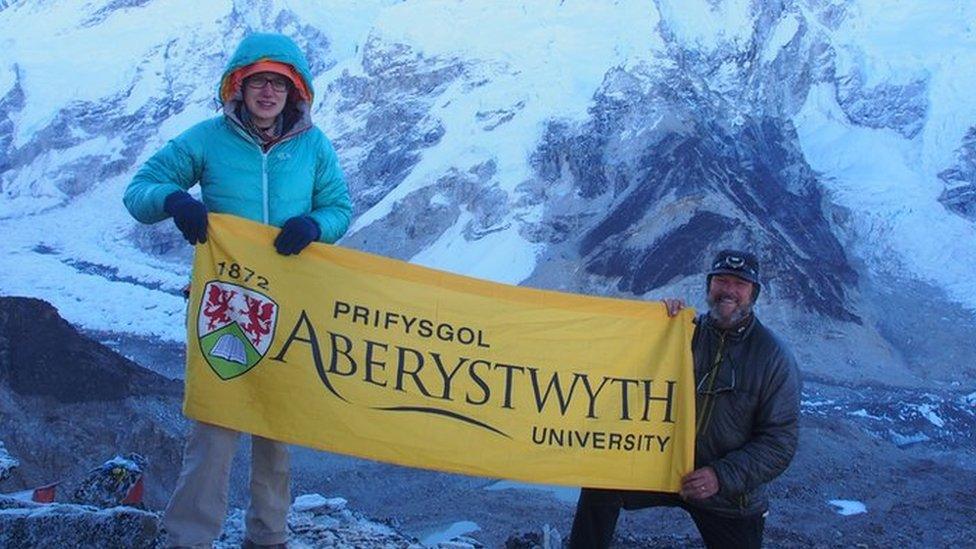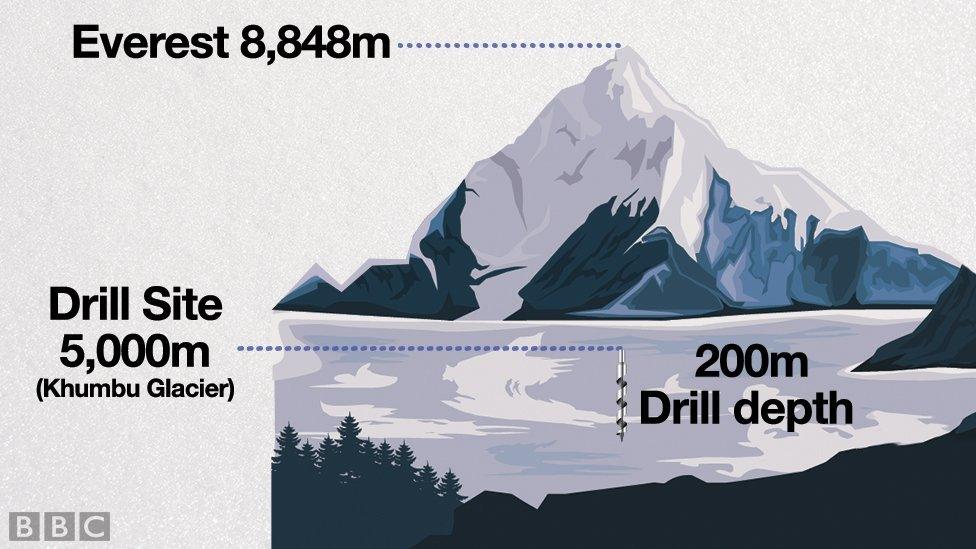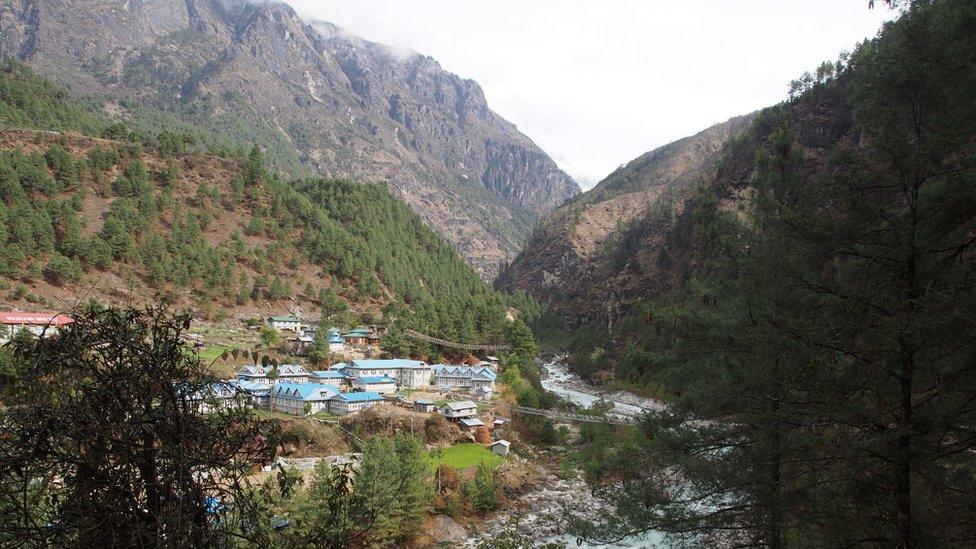Scientists return to drill world's highest glacier
- Published

The team will use a 360-degree camera to take pictures of the glacier's internal structure
Scientists from Aberystwyth University and University of Leeds are travelling to drill the world's highest glacier.
Professor Bryn Hubbard and researcher Katie Miles are heading to Khumbu Glacier in the foothills of Mount Everest, a year after their first trip.
Working at 16,400ft (5,000m) above sea level, they are aiming to understand how the glacier will change in time by modelling anticipated climate change.
They face an eight-day trek to the site to acclimatise before drilling.
The 10-mile (17km) long glacier, in north eastern Nepal, flows from as high as 25,000ft (7,600m) down to 16,000ft (4,900m) and is often used by climbers on their way to Everest base-camp.
Professor Hubbard said: "Returning to the sites where we drilled last year will enable us to collect the data loggers that have been recording for the last 12 months, and for the first time see how this glacier might respond to future changes in climate."

As well as modelling climate change, postgraduate researcher Ms Miles will use fluorescent dye to study how water flows into and through the glacier.
"All the evidence suggests that more water flows into the glacier as the ice melts than comes out from its margins.
"Dye tracing experiments will help us understand better where this missing water goes, helping us to improve computer models that are used to predict future changes to the glacier."
The work is also part of the EverDrill research project led by the University of Leeds. This year's mission will test new water heating and pressurising equipment that should enable team members to drill into the ice at 19,685ft (6,000m) above sea level.
Professor Hubbard speaking ahead of his first trip to the Khumbu Glacier
- Published11 April 2017

- Published28 June 2017
